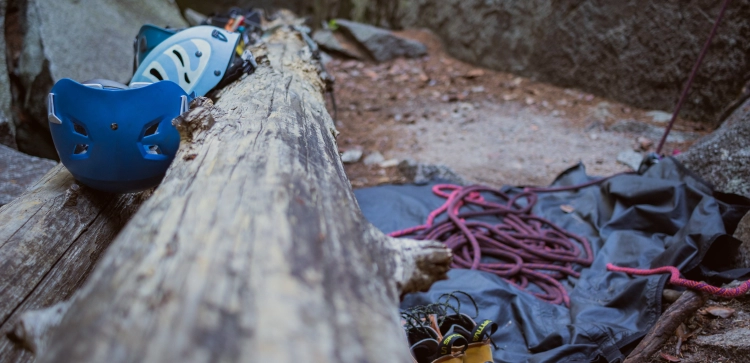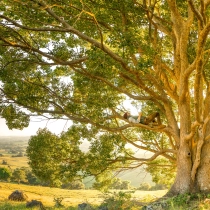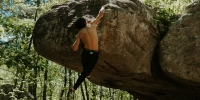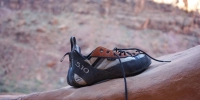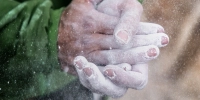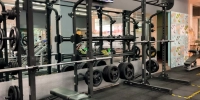Lead Climbing & Belaying: A Comprehensive Safety Guide

Lead climbing is an exhilarating discipline that offers a unique challenge, pushing climbers to their limits. Unlike top-rope climbing where the rope is already above you, in lead climbing, the rope trails behind the climber, who clips it into protection points as they ascend. This style demands a higher level of skill, awareness, and, most importantly, stringent safety precautions. At the heart of lead climbing safety lies the crucial role of proper belaying techniques, which are paramount for ensuring a secure experience, fostering trust, and promoting effective communication between climbing partners.
This guide will delve into the essential safety precautions and best practices for lead climbing, alongside the significance of mastering belaying techniques to ensure a safe and enjoyable ascent.
- Essential Safety Precautions While Lead Climbing
- 1. Comprehensive Gear Inspection
- 2. Effective Communication
- 3. Understanding And Managing Risks
- 4. Route Reading And Fall Management
- The Significance Of Proper Belaying Techniques
- Shared Accountability In Climbing Partnerships
- Frequently Asked Questions
- What Is Lead Climbing?
- Why Is Gear Inspection Important In Lead Climbing?
- What Are Common Communication Commands In Climbing?
- What Is Back-clipping And Why Is It Dangerous?
- What Is Z-clipping And How Can It Be Avoided?
- What Is Dynamic Belaying?
- Why Is Proper Belaying Significant?
- What Are A Belayer's Key Responsibilities?
- How Does Belaying Build Trust In A Climbing Partnership?
- Who Is Accountable For Safety In A Climbing Partnership?
Essential Safety Precautions While Lead Climbing
Prioritizing safety is non-negotiable in lead climbing. Adhering to these precautions can significantly mitigate risks and enhance your climbing experience.
1. Comprehensive Gear Inspection
Before every climb, a thorough inspection of all your equipment is critical. This includes:
-
Harness: Check for frayed webbing, worn-out buckle areas, and any signs of damage.
-
Rope: Inspect the entire length for cuts, excessive wear, flat spots, or core shot indicators. Pay close attention to the ends and areas that frequently pass through belay devices.
-
Carabiners: Ensure gates open and close smoothly and lock securely (if locking type). Look for sharp edges or grooving from rope wear.
-
Quickdraws: Check the webbing for wear, especially near the carabiners, and ensure carabiner gates function correctly.
-
Helmet: Inspect for cracks, dents, or any impact damage. A helmet is essential for protecting against falling objects and head impacts during a fall.
2. Effective Communication
Clear and consistent communication between the climber and belayer is the bedrock of lead climbing safety. Establish a set of clear, concise commands before starting the climb. Examples include:
-
"Clipping!": Climber signals they are about to clip a quickdraw.
-
"Take!": Climber requests the belayer to take in slack and tighten the rope.
-
"Slack!": Climber requests more rope.
-
"Falling!": Climber warns the belayer of an impending fall.
-
"Lower!": Climber requests to be lowered.
3. Understanding and Managing Risks
Lead climbing inherently involves risks, and being aware of them is the first step to managing them.
-
Back-Clipping: This occurs when the rope is clipped into the quickdraw such that it runs behind the gate of the quickdraw's rope-end carabiner. In a fall, the rope can unclip itself. Always ensure the rope runs in front of the gate.
-
Z-Clipping: This happens when the climber accidentally clips the quickdraw with a loop of rope from below a previously clipped quickdraw, rather than the active strand coming directly from their harness. This creates excessive slack and a much longer, more dangerous fall. Always use the active rope strand.
-
Falling Objects: Small rocks, gear, or even ice can fall from above. Wearing a helmet is crucial.
-
Ground Falls: The risk of hitting the ground before clipping the first piece of protection is significant. Proper spotting and a vigilant belayer are vital.
-
Rope Drag: Excessive friction on the rope due to poor quickdraw placement or winding routes can make clipping difficult and increase the risk of a fall. Extend quickdraws or use longer ones on wandering routes.
4. Route Reading and Fall Management
-
Pre-climb Planning: Assess the route for potential hazards, identify good clipping stances, and visualize sequences.
-
Clipping Stances: Choose stable and comfortable positions to clip the rope, minimizing the risk of a fall while fumbling with gear.
-
Dynamic Belaying: A skilled belayer understands how to give a dynamic catch, which involves a slight give in the rope to absorb some of the fall's impact, reducing the force on both the climber and the gear.
The Significance of Proper Belaying Techniques
Proper belaying is not just about holding a rope; it's a dynamic skill that directly impacts the climber's safety, confidence, and overall experience.
1. Foundation of Climbing Safety
The belayer is the climber's primary safety net. A skilled belayer ensures a secure environment, allowing the climber to push their limits with confidence.
-
Minimizing Fall Impact: Through dynamic belaying techniques and adept use of belay devices, a skilled belayer can minimize the force of a fall, protecting both the climber from injury and the gear from excessive stress.
-
Controlled Descent: Proper belaying ensures a smooth, controlled lower for the climber after completing a route or in case of a fall.
2. Fostering Trust and Communication
The climbing partnership is built on trust, and belaying is where this trust is most evident.
-
Mutual Respect: By meticulously performing their role, belayers demonstrate a commitment to their partner's safety, fostering camaraderie and mutual respect within the climbing community.
-
Clear Communication: Belaying necessitates constant, clear communication. The belayer must be attentive to the climber's commands and movements, and respond appropriately. This continuous dialogue is essential for conveying critical information and adapting to different climbing styles or unexpected situations.
3. Belayer's Responsibilities
A belayer's role is multifaceted and requires constant vigilance:
-
Paying Attention: The belayer must never be distracted. Their eyes should be on the climber, and their hands on the rope, ready to react.
-
Proper Use of Belay Device: Understanding and correctly using the belay device (e.g., ATC, Grigri) is fundamental. This includes proper rope insertion, braking hand position, and feeding/taking slack.
-
Managing Slack: Maintaining appropriate slack in the rope is crucial. Too much slack leads to a longer fall; too little can restrict the climber's movement or pull them off.
-
Anticipating Climber's Needs: An experienced belayer can often anticipate when a climber might need slack for a clip or be preparing for a fall, reacting proactively.
-
Anchor Management (if applicable): In multi-pitch climbing, belayers at the anchor must also manage the rope system and ensure the anchor is secure.
Shared Accountability in Climbing Partnerships
In any climbing partnership, both the climber and the belayer share accountability for safety. The belayer fulfills their crucial role through vigilance and technical proficiency, while the climber assumes responsibility for clear communication, adherence to safety protocols, and making sound decisions on the wall. This shared commitment to safety is what makes climbing a truly collaborative and rewarding endeavor.
By mastering both lead climbing precautions and proper belaying techniques, climbers can confidently explore new heights, knowing they are equipped with the knowledge and skills to minimize risks and maximize the enjoyment of this incredible sport.
Frequently Asked Questions
What is lead climbing?
Lead climbing is a style of climbing where the climber ascends with the rope trailing behind them, clipping it into protection points on the wall as they go, rather than having the rope already above them.
Why is gear inspection important in lead climbing?
Gear inspection is crucial to identify any wear, damage, or defects in equipment like harnesses, ropes, carabiners, and quickdraws, ensuring they are safe and reliable for use during a climb.
What are common communication commands in climbing?
Common commands include "Clipping!" (climber about to clip), "Take!" (belayer to take slack), "Slack!" (belayer to give rope), "Falling!" (climber warning of a fall), and "Lower!" (climber requests to be lowered).
What is back-clipping and why is it dangerous?
Back-clipping is when the rope is clipped into a quickdraw such that it runs behind the gate of the carabiner. It's dangerous because the rope can easily unclip itself during a fall, leading to a much longer and more severe fall.
What is Z-clipping and how can it be avoided?
Z-clipping occurs when the climber accidentally clips the quickdraw with a loop of rope from below a previous quickdraw. It creates excessive slack and a dangerous fall. It's avoided by always using the active rope strand coming directly from the harness.
What is dynamic belaying?
Dynamic belaying is a technique where the belayer gives a slight, controlled amount of slack during a fall to absorb some of the impact force, reducing stress on the climber and the gear.
Why is proper belaying significant?
Proper belaying is significant because it is the foundation of climbing safety, minimizing fall impact, ensuring controlled descents, fostering trust between partners, and establishing clear communication.
What are a belayer's key responsibilities?
A belayer's key responsibilities include constant vigilance, proper use of the belay device, maintaining appropriate rope slack, anticipating the climber's needs, and clear communication.
How does belaying build trust in a climbing partnership?
Belaying builds trust by demonstrating the belayer's commitment to their partner's safety through meticulous technique and constant attention, fostering a sense of reliability and mutual dependence.
Who is accountable for safety in a climbing partnership?
Both the climber and the belayer share accountability for safety. The belayer is responsible for their technical proficiency and vigilance, while the climber is responsible for communication, adherence to protocols, and sound decision-making.



